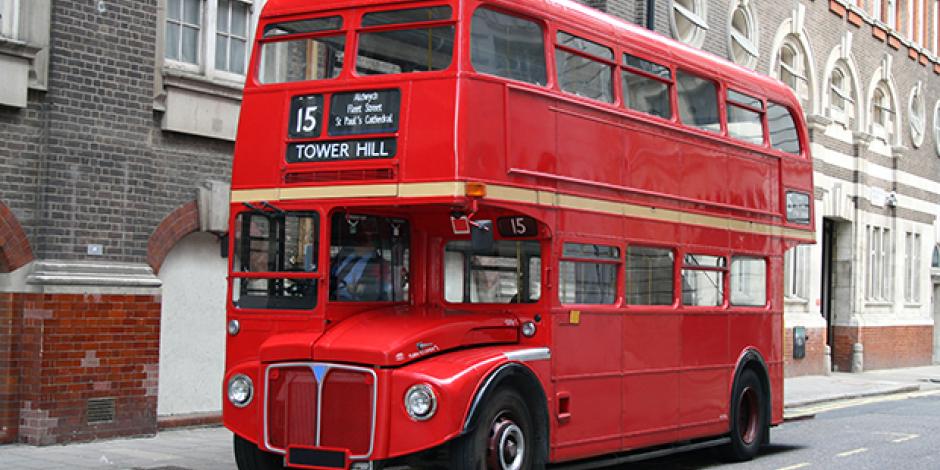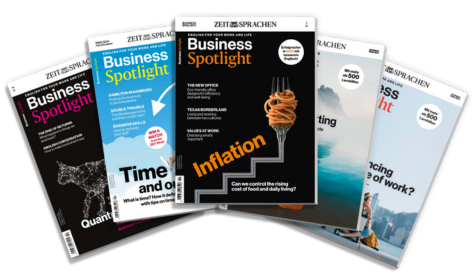London is a megacity. As such, it doesn't just have eight airports, 40 higher education institutions and more than 14 million people living in its urbanurban, städtischurban area. It also has a distinct language. Here's a crash course in London lingo (ifml.)Jargonlingo:
The City
If someone says they work “in The City”, they usually mean London’s financial district. Also known as “the Square Mile”, it’s the oldest part of London.
In town
London may be a city but you’ll hear people say they work “in town” or “come up to town” (even if they are travelling south to get there). So a colleague might suggest “meeting in town”, and actually mean the city, or quite possibly The City!
The East End
Area of London starting on the edge of the City (financial district) and stretching eastwards but staying north of the river Thames. It includes the Docklands business district and is the home of the Cockney.
Cockney
Someone born in the East End of London.
West End
Not to be confused with west London, the West End is an area of central London (but west of The City) famous for shopping and entertainment. The West End is also a synonym for London’s theatre scene, as in: “She to star(eine Hauptrolle) spielenstarred in many West End shows” or “Let’s see what’s on in the West End.”
The Old Lady of Threadneedle Street
A nickname for the Bank of England. Sometimes simply, The Old Lady.
The Tube
Nickname for the London Underground, as in “I’ll take the Tube”, or “wait for me at the Tube station”.
Go contactless
To travel on London’s buses or Tube trains using a credit or debit card. You simply “tap in” and — in the case of trains — “tap out” by touching the card reader. It avoids queueing for a ticket or a pre-paid “Oyster card”.
Congestion Charge (and T-Charge)
The congestionAndrang, StauCongestion Charge is the levyAbgabe, Erhebunglevy (currently £11.50) that drivers pay to enter central London during working hours from Monday to Friday. There is an extra £10 “T-Charge” (the T stands for toxicityToxizität, Giftigkeittoxicity) if your vehicle is old and smelly (this is not the technical definition).
Boris Bikes
The popular name for the 11,000 bikes available through the public cycle hire schemehier: Modellscheme. Officially they should be called Santander Cycles (after the current corporate sponsorFirmensponsorcorporate sponsor) but Boris Johnson was mayor of London when the bikes were introduced and the name has to stickhier: hängen bleibenstuck.
Mind the gap
A recorded message on several London Underground lines warns passengers getting on or off trains to “mind the gapAbstand, Lückegap”: in other words, to be careful not to fall into the dangerous space created when straight trains stop at curved platforms.
The Elizabeth Line
A new high-speed railway line running more than 100 kilometres from Reading and Heathrow airport in the west, through the capital, to Abbey Wood in southeast London. The central section is to be due to do sth.etw. voraussichtlich tundue to open in December 2018 but how long it takes for travellers to call it the Elizabeth Line is anyone’s guess — during the past ten years of development it has been known as Crossrail.
Wobbly Bridge
wobblywackeligWobbly Bridge is a name sometimes given to the Millennium Bridge, which crosses the Thames between St Paul’s Cathedral and Tate Modern. Opened in 2000, the footbridge was almost immediately closed again for alterationhier: Umbaualterations after people reported that it to rockwiegen, schaukelnrocked from side to side.
Marylebone
A district of London and a mainlineHauptstreckemainline rail station that no British person knows how to pronounce. Some (including the recorded voice on the London Underground) insist on “Marly-bone”, others go for “Marly-bun” or “Marler-bone”, and those of us who think we are correct say “Marry-le-bone”.
Cabbie
Informal name for the driver of a traditional London black cab (taxi). The cabbie will come with his (the driver is most often a man) own lingo, perhaps greeting you with “all right, mate?” or “how’s it going?” (not to be confused with “where are you going?”) and saying goodbye with “have a good one”, “cheerio” or “take it easy”.
The Gherkin
A 180 metre-high office building properly known by its address, 30 St Mary Axe. But Londoners started calling this cucumberGurkecucumber-shaped tower The gherkinEssiggurkeGherkin even before it opened in 2004, and now the name has acquired semi-officialhalboffiziellsemi-official status. It’s very useful for orienting oneself in London, as is The shardScherbeShard, a 310 metre skyscraper that stands almost opposite on the south side of the Thames.
Mehr über London
In der Ausgabe 4/2018 von Business Spotlight finden Sie eine ausführliche Reportage über London, Analysen zur Auswirkung des Brexit und noch mehr Tipps rund um die englische Metropole. Bestellen Sie in unserem Shop das Printmagazin oder E-Paper.




